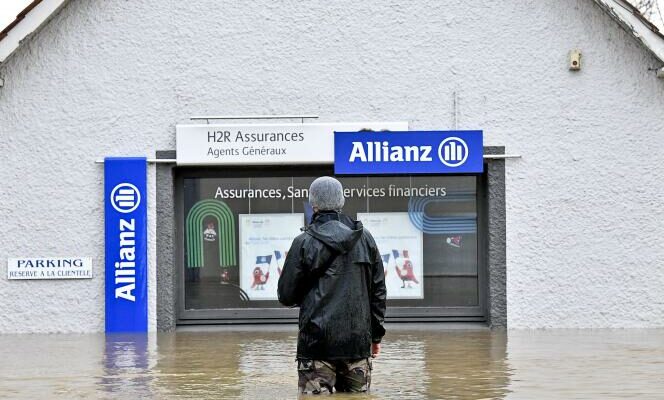Better finance compensation for natural disasters, take into account differences in exposure to risks and strengthen prevention: it is on these three pillars that the French strategy for adapting the insurance sector to change should be based climate, if the government validates the approach recommended by the expert report published Tuesday April 2.
After consulting some 150 players in the insurance sector, representatives of civil society and researchers, 37 proposals are detailed over 116 pages by the three experts commissioned, in May 2023, by the ministries of the economy and transition. ecological: Thierry Langreney, former deputy general manager of the insurance activities of Crédit Agricole and president of the association Les Ateliers du futur, Gonéri Le Cozannet, geographer and contributor to the reports of the Intergovernmental Panel on Climate Change , and Myriam Merad, research director at the National Center for Scientific Research.
At the heart of these proposals is the consolidation of the natural disaster compensation system, the sustainability of which is today threatened by recurring deficits, which already force it to regularly draw on its reserves.
Climate-related losses (floods, drought, storms and hail) cost insurers 6.5 billion euros in 2023, making the vintage the third most expensive for the sector after 1999 (16.6 billion euros with storms Lothar and Martin) and 2022 (10.6 billion euros, mainly due to drought and hail), according to the annual report of the France Insurers federation.
Tracking “climate inflation”
According to the work of the Central Reinsurance Fund (CCR), manager of the “Cat Nat” scheme, the damage caused by the disasters covered by it (flood, drought, marine submersion, cyclones, earthquake) could increase by 40 %, or 811 million euros per year, by 2050, and even 60% taking into account the increase in the overall value of insured property.
Without waiting for the publication of the report, the government announced, on December 28, 2023, an increase, effective from 1er January 2025, of the “surcharge” on the insurance contracts which finance the scheme.
This additional premium levied on all comprehensive home insurance contracts will therefore increase, in 2025, from 12% to 20%. Enough to provide the regime with around 1.3 billion euros in additional resources each year and increase its capacity to around 3.2 billion euros.
You have 61.88% of this article left to read. The rest is reserved for subscribers.
